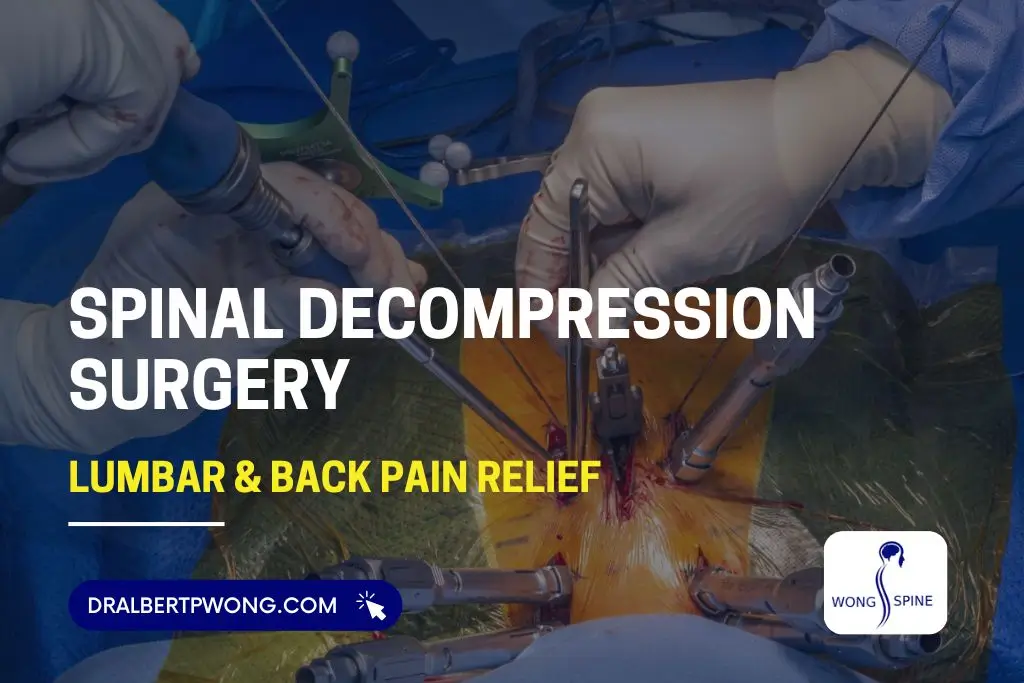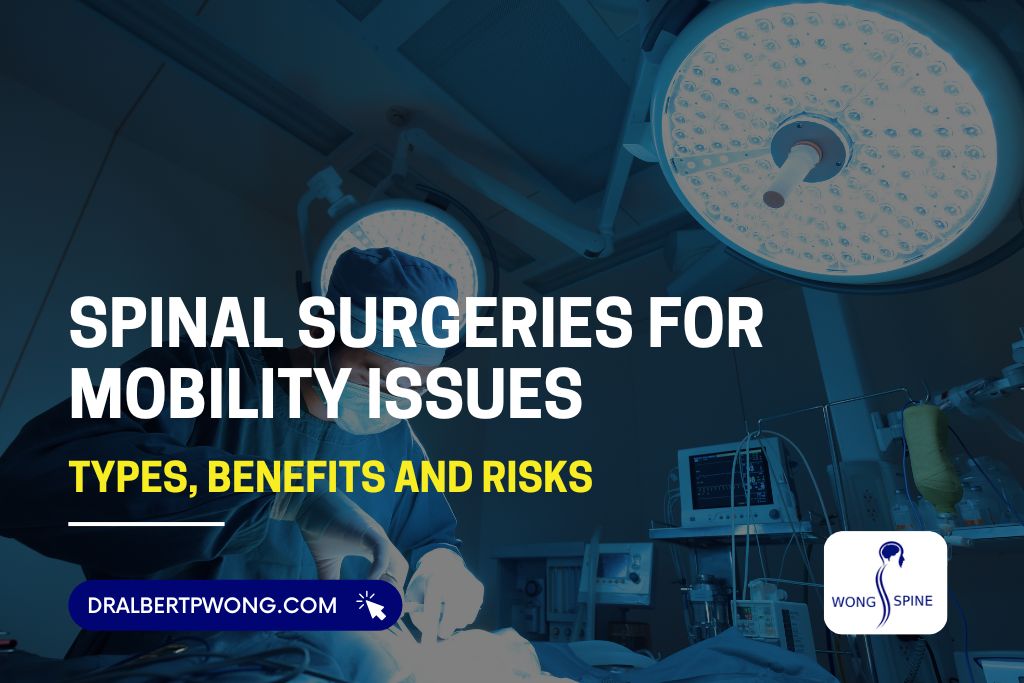Overview
Recovery from back surgery varies based on the type of procedure, overall health, and adherence to postoperative instructions. The goal of surgery is to relieve pain, restore mobility, and improve function. Recovery timelines differ: minimally invasive procedures often heal in weeks, while complex surgeries like spinal fusion can take months. Factors such as age, medical conditions, and rehabilitation affect how quickly patients regain strength and mobility.
Understanding Back Surgeries
Back surgery is performed to treat conditions that affect the spine, relieve nerve pressure, or stabilize the vertebrae. A spine specialist determines the appropriate procedure based on diagnosis, severity of symptoms, and overall health.
Types of Spinal Surgeries
Spinal surgeries are generally categorized into:
- Decompression procedures: Relieve pressure on nerves or the spinal cord (e.g., discectomy, laminectomy, foraminotomy).
- Stabilization procedures: Improve spine stability and reduce pain (e.g., spinal fusion, artificial disc replacement, vertebroplasty/kyphoplasty).
- Minimally invasive vs. open surgery: Minimally invasive approaches use smaller incisions and allow faster recovery; open surgery may be required for complex cases.
Common Procedures: Spinal Fusion and More
- Spinal Fusion: Joins two or more vertebrae to stabilize the spine; recovery can take several months.
- Artificial Disc Replacement: Replaces a damaged disc while preserving motion; recovery is typically faster than fusion.
- Discectomy / Microdiscectomy: Removes part of a herniated disc to relieve nerve pressure; often allows return to activity within weeks.
Factors Influencing Surgery Decisions
- Severity and duration of pain
- Nerve compression or weakness
- Spinal instability or deformities
- Response to nonsurgical treatments such as physical therapy, medication, or injections
Recovery Time After Spinal Surgery
Recovery after spinal surgery depends on the type of procedure, the patient’s health, and adherence to postoperative instructions. Understanding what to expect can help you plan for rehabilitation and daily activities.
What to Expect During the Initial Recovery Period
- Hospital stay: Ranges from a few hours for minimally invasive procedures to several days for complex surgeries.
- Early mobility: Physical therapy often begins within 24–48 hours to promote movement and reduce complications.
- Pain management: Medications are used to control pain, enabling participation in therapy and daily activities.
Typical Back Surgery Recovery Timeframes
- Minimally invasive procedures: 2–6 weeks for most daily activities.
- Discectomy / Microdiscectomy: 4–6 weeks for light activity; full recovery may take 2–3 months.
- Spinal fusion: 3–6 months for basic activity; full fusion may take up to 12 months.
- Artificial disc replacement: 6–12 weeks for most daily functions.
- Vertebroplasty / Kyphoplasty: 1–2 weeks for light activity and pain relief.
Factors That Affect Recovery Duration
- Age and overall health.
- Smoking and lifestyle habits.
- Pre-existing medical conditions (e.g., diabetes, obesity).
- Adherence to rehabilitation and physical therapy.
- Complexity and number of spinal levels involved.
How Long Does It Take to Recover from Back Surgery?
Recovery depends on the procedure and patient health. Minimally invasive surgeries, like microdiscectomy or artificial disc replacement, usually allow return to normal activities in 4–6 weeks. Spinal fusion and open surgeries often require 3–6 months for basic recovery and up to 12 months for full healing.
Recovery occurs in phases: initial hospital recovery, gradual return to daily activities, physical therapy, and full mobility. Factors such as age, smoking, chronic conditions, and preoperative fitness affect progress. Monitoring pain, mobility, and function helps guide recovery.
How Long Does It Take to Recover from Back Surgery?
Recovery time after back surgery depends on the procedure performed, the patient’s overall health, and adherence to rehabilitation. Minimally invasive surgeries often allow patients to return to light activities within a few weeks, while complex procedures like spinal fusion may require several months for full recovery.
Recovery typically occurs in phases: initial healing, gradual return to daily activities, and long-term strengthening. Following your surgeon’s instructions, attending physical therapy, and avoiding activities that strain the spine are essential for a smooth and safe recovery.
Understanding the Phases of Recovery
Back surgery recovery generally occurs in three phases:
- Immediate Recovery (Days 1–14): Hospital stay or initial home recovery, pain management, and limited mobility. Patients begin gentle movement and follow postoperative precautions.
- Early Recovery (Weeks 2–6): Gradual increase in activity, light walking, and basic daily tasks. Physical therapy may begin to restore mobility and strength.
- Long-Term Recovery (Weeks 6–12+): Continued physical therapy, progressive strengthening, and return to normal activities. Full healing, especially after fusion procedures, may take several months.
Monitoring symptoms and following your surgeon’s guidelines during each phase is crucial to prevent complications and ensure optimal outcomes.
Timeline for Recovery: Spinal Fusion vs. Other Surgeries
Recovery timelines vary depending on the type of surgery:
- Spinal Fusion: Full recovery can take 3–6 months for basic activities and up to 12 months for complete bone fusion. Patients may need to limit bending, lifting, and twisting during this time.
- Discectomy / Microdiscectomy: Most patients return to daily activities within 4–6 weeks, with minimal restrictions.
- Minimally Invasive Procedures: Recovery is generally faster, often 2–4 weeks for light activity, depending on the patient’s health and procedure complexity.
- Artificial Disc Replacement: Typically allows a return to normal activities within 6–12 weeks while preserving spinal motion.
Following post-operative instructions and attending physical therapy are key to achieving the expected recovery timeline.
Signs of Progress in Healing After Spinal Surgery
Patients can monitor recovery progress through these indicators:
- Reduced Pain: Gradual decrease in back or leg pain over weeks to months.
- Improved Mobility: Ability to walk, sit, and perform daily activities with less discomfort.
- Increased Strength: Gradual improvement in core and back muscle strength through physical therapy.
- Healing of Surgical Site: Incision heals without redness, swelling, or infection.
- Return to Normal Activities: Ability to resume work, light exercise, and daily routines as recommended by the surgeon.
Noticing these signs while following medical guidance helps ensure a safe and effective recovery.
Tips to Help You Recover Faster
Recovery from back surgery can be improved by following specific strategies that support healing, reduce complications, and restore mobility.
Rehabilitation and Physical Therapy
Follow the prescribed physical therapy program to restore strength, flexibility, and stability. Consistent exercises improve core muscles and prevent stiffness.
Rest and Activity Balance
Rest when needed, but avoid prolonged inactivity. Gradually increase walking and light movement as directed. Avoid bending, lifting, or twisting until cleared by your surgeon.
Nutritional Support
Eat a balanced diet with sufficient protein, calcium, and vitamins C and D to support healing. Stay hydrated and maintain a healthy weight to reduce stress on the spine.
Managing Pain and Discomfort During Recovery
Back surgery recovery often involves managing pain and discomfort to allow safe healing and participation in rehabilitation. Proper pain control supports mobility, reduces stress, and improves overall recovery outcomes.
Medications and Pain Management Strategies
Pain after back surgery is typically managed with a combination of medications:
- Prescription Pain Relievers: Short-term use of opioids may be necessary for moderate to severe pain, but these are usually tapered quickly to reduce dependency risk.
- Nonsteroidal Anti-Inflammatory Drugs (NSAIDs): Medications like ibuprofen or naproxen help control inflammation and mild to moderate pain. Some surgeons limit NSAID use in fusion surgeries, as they can affect bone healing.
- Acetaminophen: Can be used in combination with other medications to manage discomfort.
- Muscle Relaxants: Prescribed when muscle spasms contribute to pain.
Pain management plans are individualized. Following dosing instructions, monitoring side effects, and reporting uncontrolled pain to your healthcare team are essential for safe recovery.
Alternative Therapies for Pain Relief
In addition to medications, alternative therapies may help relieve discomfort and support healing:
- Ice and Heat Therapy: Ice can reduce swelling in the early post-operative period, while heat may relieve muscle tension later in recovery.
- Physical Therapy Techniques: Gentle stretching, massage, and guided exercises can reduce stiffness and improve circulation.
- Transcutaneous Electrical Nerve Stimulation (TENS): Electrical stimulation may help manage pain in some patients.
- Mind-Body Approaches: Relaxation techniques, meditation, and controlled breathing can help manage pain perception and reduce stress.
These therapies are most effective when used under the guidance of a surgeon or physical therapist.
Recognizing When to Seek Medical Help
Even with proper pain management, certain signs require prompt medical attention:
- Sudden or worsening pain at the surgical site.
- Redness, swelling, drainage, or foul odor from the incision.
- Fever or chills indicating a possible infection.
- Numbness, weakness, or loss of bowel/bladder control.
- Persistent pain that does not improve with prescribed medications.
Early recognition of complications helps prevent long-term problems and ensures safe recovery.
Treatment at Wong Spine
At Wong Spine, patients receive comprehensive care for spinal conditions and post-surgical recovery. Dr. Albert Wong provides individualized evaluations, creates tailored treatment plans, and guides patients through minimally invasive and traditional spine surgeries.
The clinic focuses on patient education, clear post-operative instructions, and structured rehabilitation programs. Procedures such as artificial disc replacement, spinal fusion, and microdiscectomy use advanced techniques to reduce pain, improve recovery, and restore mobility.
Patients receive:
- Pre-operative counseling and preparation
- Personalized rehabilitation plans with physical therapy support
- Ongoing monitoring during recovery
Wong Spine’s approach helps patients regain function, manage pain, and return to daily activities safely.






